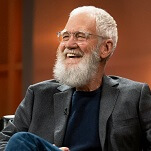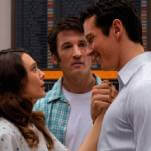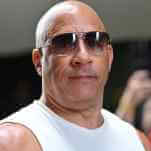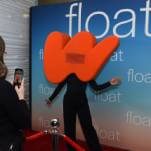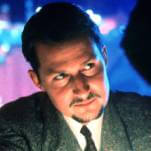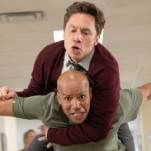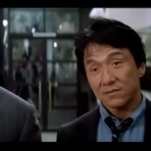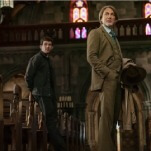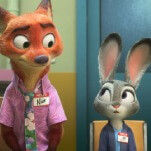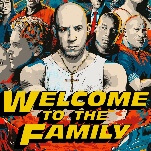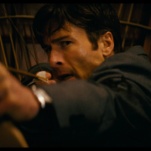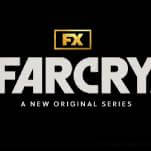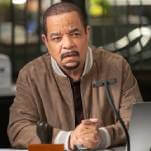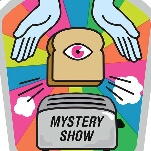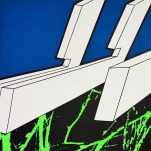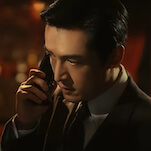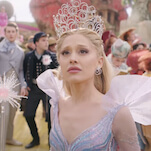In 1993, Arcade turned virtual reality into virtually watchable horror
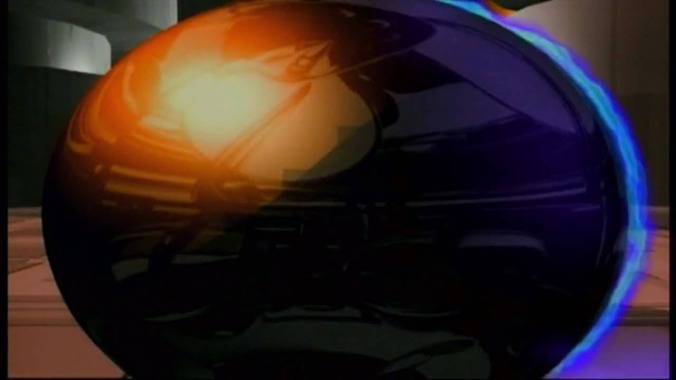
Watch This offers movie recommendations inspired by new releases or premieres, or occasionally our own inscrutable whims. With Tomb Raider in theaters Friday, Ready Player One screening at SXSW, and Jumanji: Welcome To The Jungle now on home-viewing platforms, we’re looking back on “video game movies.” The catch: None of them are based on real games.
Arcade (1993)
Normally the “Watch This” header is meant sincerely and unreservedly. But I’ll be honest here: In applying it to 1993’s Arcade, I’m saying “watch this” the way I might about, say, a Smash Mouth mashup or a horrific football injury. You won’t actually get anything out of it, other than the satisfaction of some morbid curiosity. And yet, I will also maintain that it’s worth it, and that you’ll probably enjoy it on some level. Arcade is not a good film by any means, yet it’s strangely memorable, and more importantly, oddly, compulsively watchable—enough so that I sat through it a (conservatively estimated) dozen times during its mid-’90s, late-night run on HBO. There must be something to it.
If you believe the sticker that once adorned its VHS box, that special something is that Arcade “Features ‘Virtual Reality’ Special Effects!” (scare quotes around “virtual reality” heavily emphasized), something early ’90s audiences ostensibly couldn’t get enough of. Truly, it was a magical age, when you couldn’t so much as buy the weed you needed to watch Arcade without your dealer forcing you to sit through at least 20 minutes of Mind’s Eye comps. In 1992, The Lawnmower Man had combined Stephen King and the visionary aesthetics of Dire Straits’ “Money For Nothing” video to explore the limitless possibilities VR promised for movies about fighting and fucking big, blocky pixels. In 1994, the Michael Douglas thriller Disclosure would use VR to boldly imagine the file cabinets of tomorrow, a terrifying “virtual office” where a two-dimensional Demi Moore could stalk you through the halls. That same year, the Edward Furlong-starring Brainscan added VR to the list of things parents needed to worry about their kids getting into, along with flannel shirts and Primus. As with every emergent technology, the movies struggled to understand virtual reality, and thus treated it as yet another unknown to fear.
Released squarely in the middle of those, Arcade is, like Brainscan, a horror film that steals its sucked-inside-the-game premise and sentient-machine villain directly from Disney’s Tron, giving it a trendy ’90s makeover of CGI polygons and deep psychological trauma. Party Of Five almost-breakout Megan Ward, then hot off Encino Man, stars as Alex, a suburban teen who’s been in a depressive spiral ever since her mother’s suicide. To cheer her up, Alex’s friends—including Seth Green and My So-Called Life’s A.J. Langer—invite her down to the local arcade to test out a new, immersive virtual reality game that is, confusingly, also called Arcade. There they meet the mysterious CEO behind Arcade (Star Trek: The Next Generation’s John De Lancie), who offers each of them demo copies to try out at home. As Alex’s friends mysteriously begin to disappear one by one, it quickly becomes obvious that they’ve become trapped inside the game, and that it’s up to Alex and her elite gamer pal Nick, played by an awkwardly teenaged Peter Billingsley, to go in and beat all of Arcade’s seven levels. Only then can Alex free their tormented souls from the eternal spin of CD-ROM limbo.

